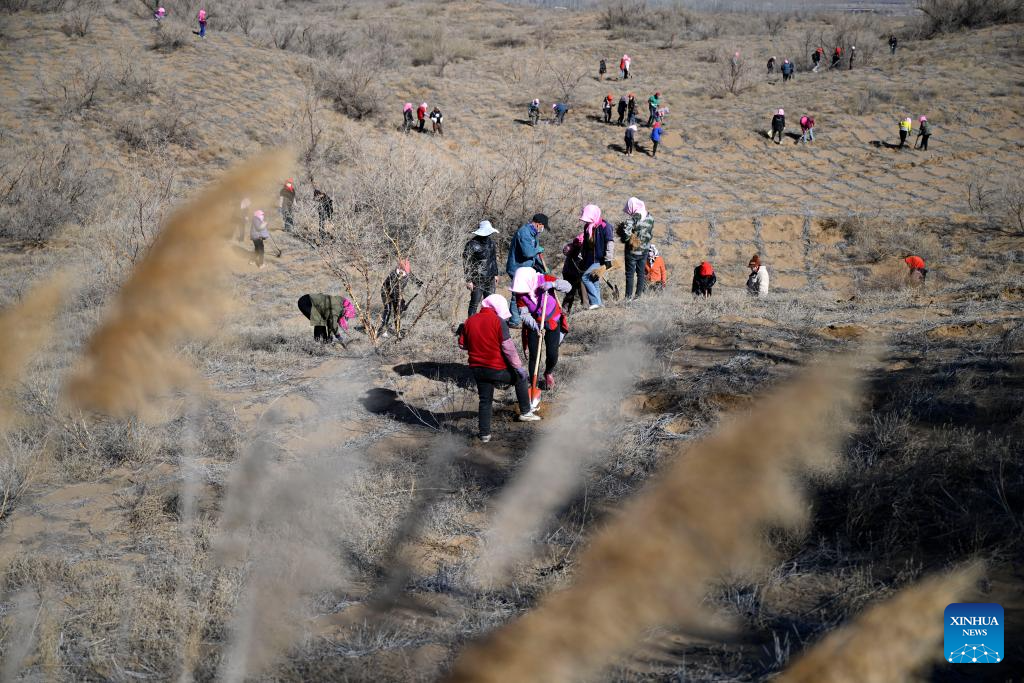
Workers plant Caragana seedlings at Baijitan national nature reserve of Lingwu, northwest China's Ningxia Hui Autonomous Region, March 19, 2024.
On the southwest edge of the Maowusu Desert, there lies a 60-km-long and 30-km-wide oasis. The verdure, which blocks windblown dust in Maowusu, has been working in fighting desertification.
Within the green belt is the Baijitan national nature reserve of Lingwu City. Yet back in the 1950s, Baijitan, which adjoins Maowusu, one of China's major deserts, was still a barren land known for "no birds in the sky and no grass on the ground."
For more than several decades, with the unremitting efforts of experts, local people and volunteers, the afforestation here has effectively curbed the expansion of the Maowusu Desert. (Xinhua/Wang Peng)
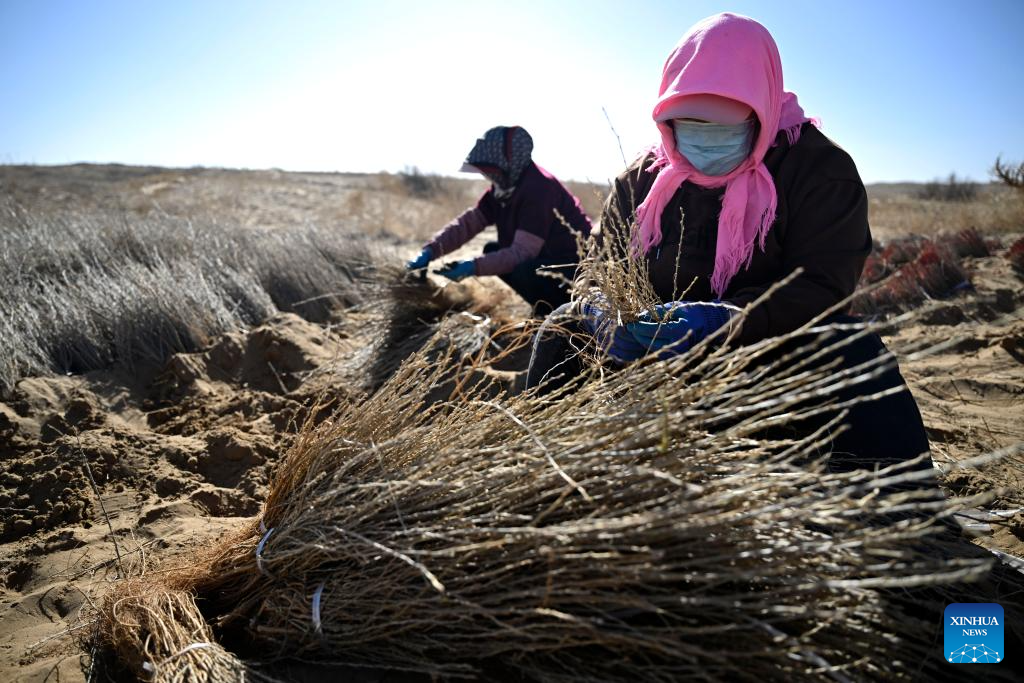
Workers process Caragana seedlings to be planted at Baijitan national nature reserve of Lingwu, northwest China's Ningxia Hui Autonomous Region, March 19, 2024.
On the southwest edge of the Maowusu Desert, there lies a 60-km-long and 30-km-wide oasis. The verdure, which blocks windblown dust in Maowusu, has been working in fighting desertification.
Within the green belt is the Baijitan national nature reserve of Lingwu City. Yet back in the 1950s, Baijitan, which adjoins Maowusu, one of China's major deserts, was still a barren land known for "no birds in the sky and no grass on the ground."
For more than several decades, with the unremitting efforts of experts, local people and volunteers, the afforestation here has effectively curbed the expansion of the Maowusu Desert. (Xinhua/Wang Peng)
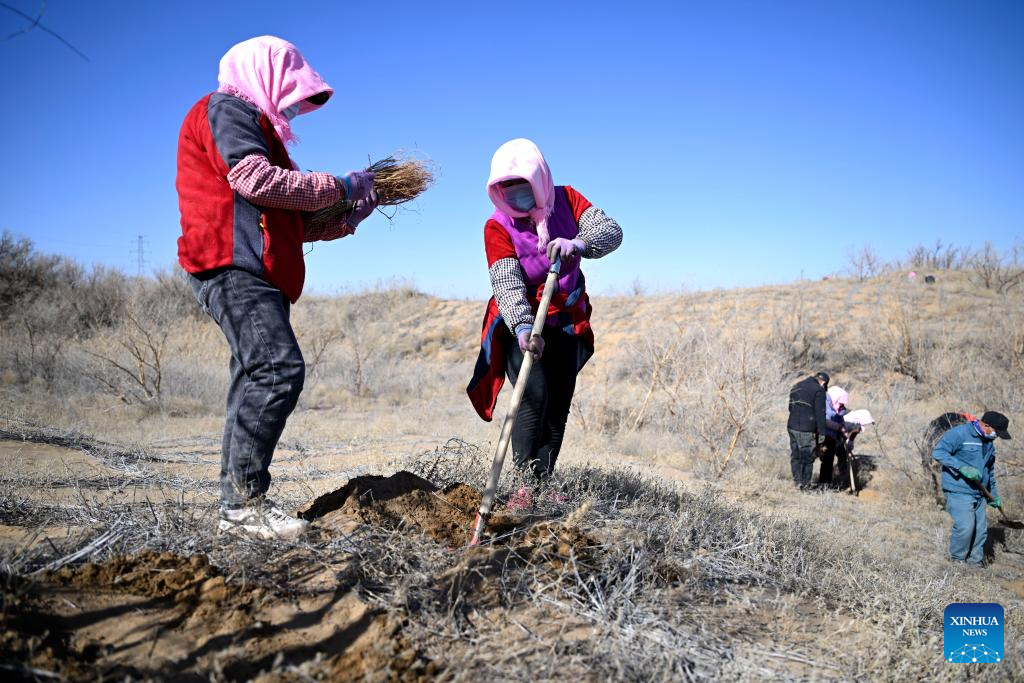
Workers plant Caragana seedlings at Baijitan national nature reserve of Lingwu, northwest China's Ningxia Hui Autonomous Region, March 19, 2024.
On the southwest edge of the Maowusu Desert, there lies a 60-km-long and 30-km-wide oasis. The verdure, which blocks windblown dust in Maowusu, has been working in fighting desertification.
Within the green belt is the Baijitan national nature reserve of Lingwu City. Yet back in the 1950s, Baijitan, which adjoins Maowusu, one of China's major deserts, was still a barren land known for "no birds in the sky and no grass on the ground."
For more than several decades, with the unremitting efforts of experts, local people and volunteers, the afforestation here has effectively curbed the expansion of the Maowusu Desert. (Xinhua/Wang Peng)
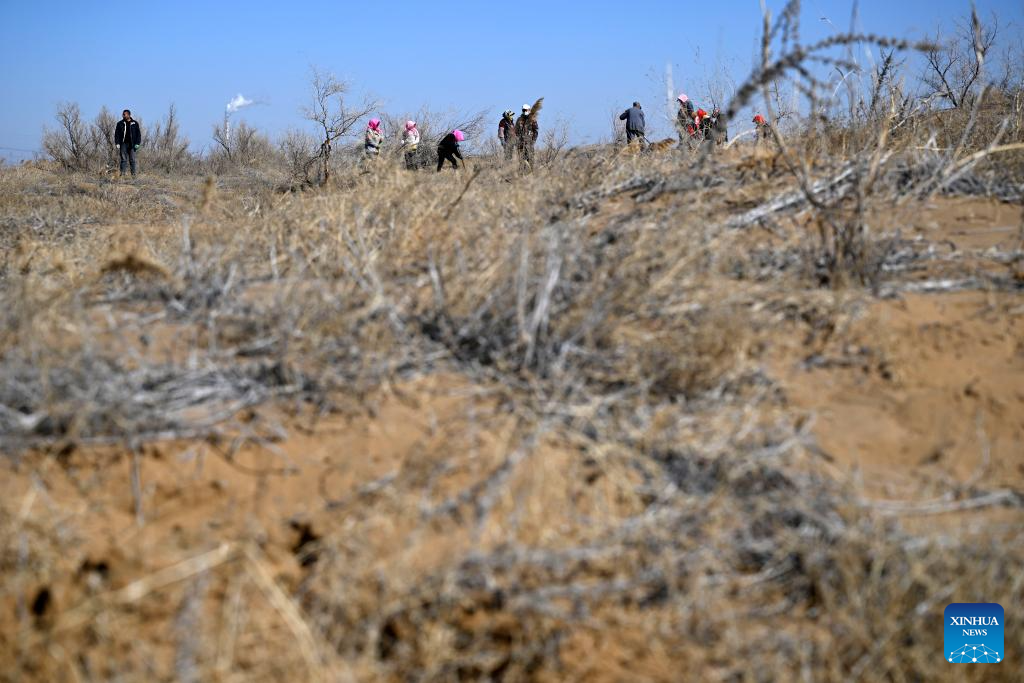
Workers plant Caragana seedlings at Baijitan national nature reserve of Lingwu, northwest China's Ningxia Hui Autonomous Region, March 19, 2024.
On the southwest edge of the Maowusu Desert, there lies a 60-km-long and 30-km-wide oasis. The verdure, which blocks windblown dust in Maowusu, has been working in fighting desertification.
Within the green belt is the Baijitan national nature reserve of Lingwu City. Yet back in the 1950s, Baijitan, which adjoins Maowusu, one of China's major deserts, was still a barren land known for "no birds in the sky and no grass on the ground."
For more than several decades, with the unremitting efforts of experts, local people and volunteers, the afforestation here has effectively curbed the expansion of the Maowusu Desert. (Xinhua/Wang Peng)
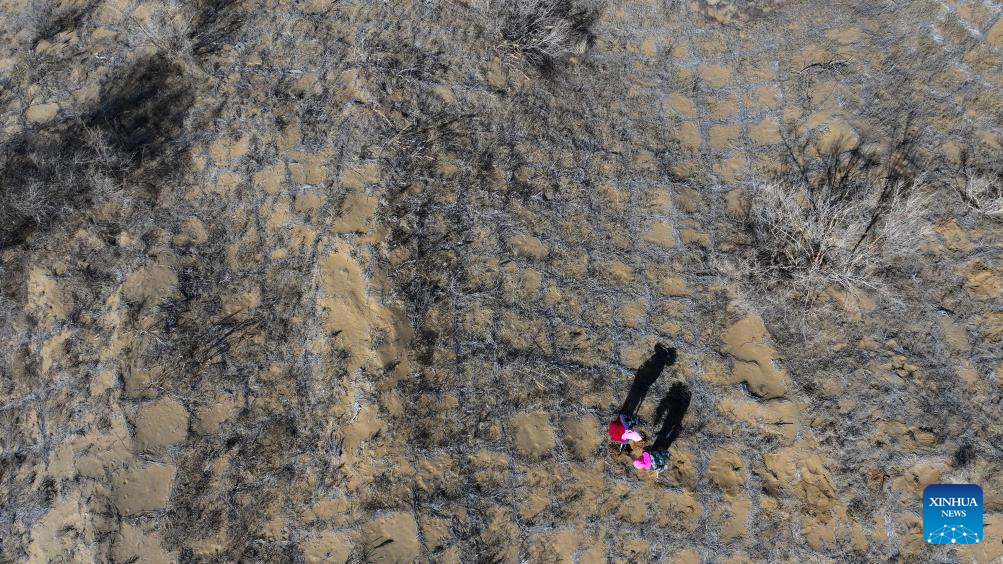
An aerial drone photo taken on March 19, 2024 shows workers planting Caragana seedlings at Baijitan national nature reserve of Lingwu, northwest China's Ningxia Hui Autonomous Region.
On the southwest edge of the Maowusu Desert, there lies a 60-km-long and 30-km-wide oasis. The verdure, which blocks windblown dust in Maowusu, has been working in fighting desertification.
Within the green belt is the Baijitan national nature reserve of Lingwu City. Yet back in the 1950s, Baijitan, which adjoins Maowusu, one of China's major deserts, was still a barren land known for "no birds in the sky and no grass on the ground."
For more than several decades, with the unremitting efforts of experts, local people and volunteers, the afforestation here has effectively curbed the expansion of the Maowusu Desert. (Xinhua/Wang Peng)
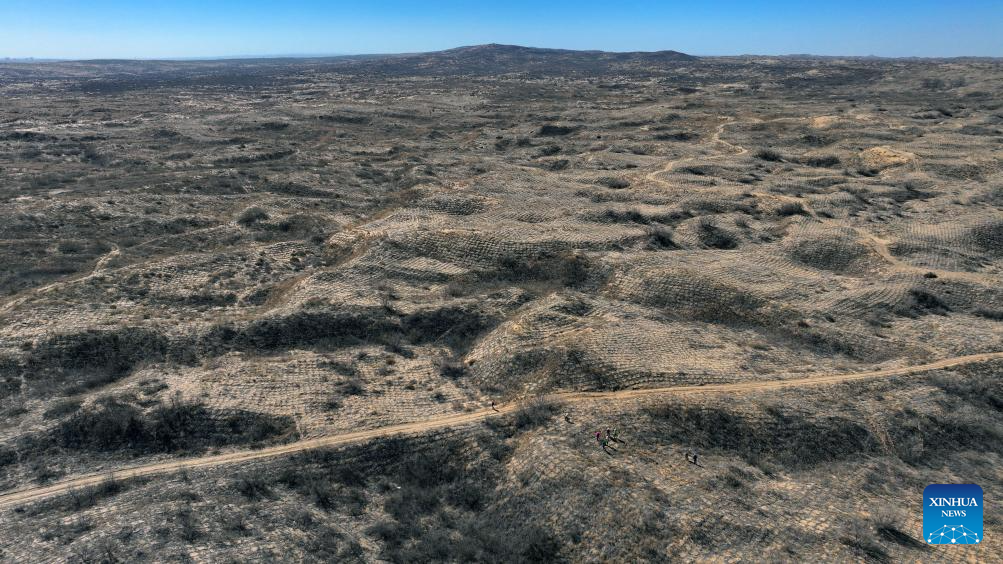
An aerial drone photo taken on March 19, 2024 shows workers planting Caragana seedlings at Baijitan national nature reserve of Lingwu, northwest China's Ningxia Hui Autonomous Region.
On the southwest edge of the Maowusu Desert, there lies a 60-km-long and 30-km-wide oasis. The verdure, which blocks windblown dust in Maowusu, has been working in fighting desertification.
Within the green belt is the Baijitan national nature reserve of Lingwu City. Yet back in the 1950s, Baijitan, which adjoins Maowusu, one of China's major deserts, was still a barren land known for "no birds in the sky and no grass on the ground."
For more than several decades, with the unremitting efforts of experts, local people and volunteers, the afforestation here has effectively curbed the expansion of the Maowusu Desert. (Xinhua/Wang Peng)
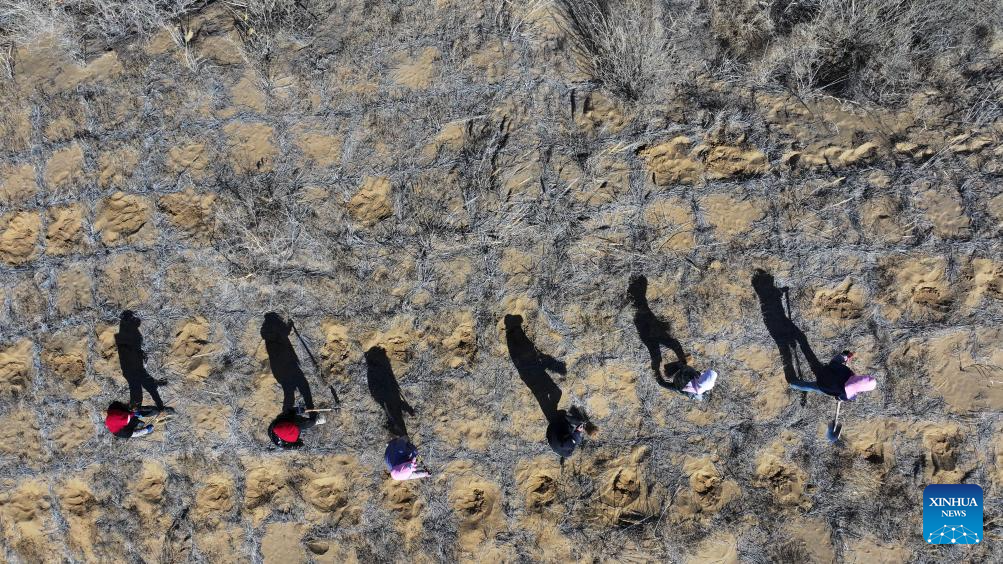
An aerial drone photo taken on March 19, 2024 shows workers planting Caragana seedlings at Baijitan national nature reserve of Lingwu, northwest China's Ningxia Hui Autonomous Region.
On the southwest edge of the Maowusu Desert, there lies a 60-km-long and 30-km-wide oasis. The verdure, which blocks windblown dust in Maowusu, has been working in fighting desertification.
Within the green belt is the Baijitan national nature reserve of Lingwu City. Yet back in the 1950s, Baijitan, which adjoins Maowusu, one of China's major deserts, was still a barren land known for "no birds in the sky and no grass on the ground."
For more than several decades, with the unremitting efforts of experts, local people and volunteers, the afforestation here has effectively curbed the expansion of the Maowusu Desert. (Xinhua/Wang Peng)



